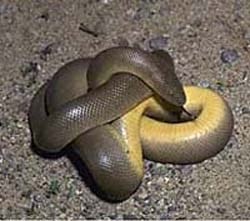|
182 bird species, 65 mammal species, 15 reptile and amphibian species, and 12 fish species have been found in the park. Below are pictures and a few fun facts about some of our most talked about animals. There are also links to pages with more pictures and facts about all of Mount Rainier's animals. Mammals
NPS photo Black bears are the largest omnivores (plant and meat eaters) that live in Mount Rainier National Park. Males can weigh from 150-500 pounds and females weigh between 90-250 pounds. Their shaggy coats can range in color from black to brown to honey-colored; they have large, wide feet with curved black claws, large heads with small eyes, and short round ears. Bears hibernate during the winter, but during the summer they can be found throughout the park from lowland forests to subalpine meadows. 
NPS photo Also called pumas or cougars, mountain lions are large carnivores (meat eaters) weighing between 70-190 pounds. Their favorite prey to hunt are deer and elk, but they will also eat mountain goats, beavers, porcupines, birds, rabbits and other small mammals. Mountain lions range in color from greyish-tan to yellow-cinnamon in color, with white undersides. The sides of their nose, backs of the ears, and the tip of the tail are black. Their bodies are long and skinny with long tails. Rarely spotted by people, mountain lions live in forests, though they may follow their prey into subalpine areas. Birds
NPS/Emily Brouwer Spotted owls are an endangered species that lives in the park. They are large owls with a round face, dark brown feathers, and white spots. They are carnivores (meat eaters) that hunt rodents at night and have special feathers that help them to fly silently. They live in the old-growth forests that surround the mountain. 
NPS/Kevin Bacher Gray jays are large songbirds with small, stubby bills. Their feathers are dark gray on their backs and light gray on their chests and underside of the tail. They eat berries and insects (omnivore) and are also known to be robbers of picnic tables. Gray jays usually rest and nest in the top of evergreen trees like the ones in the forest and subalpine meadows of Mount Rainier. Reptiles, Amphibians, and Fish
NPS Photo This salamander can grow 7-12 in (18-30 cm) long, brown-purplish coloring with black splotches. They have wet, slimy skin and lay their eggs in water (amphibian). It is large enough to eat mice, garter snakes and other salamanders (carnivore). It is also the only salamander with a voice, able to emit a "yelp"-like call. 
NPS Photo Rubber boas are a small, gray snake that look so much like rubber it is mistaken for a toy. They are cold-blooded and covered in scales. This means they are a reptile. They live near water in the forests of Mount Rainier and eat small rodents and insects (carnivore). They hunt by sneaking up on their prey but are not venomous.
Click here for more details and information about the reptiles of Mount Rainier. Click here for more details and information about the amphibians of Mount Rainier. Click here for more details and information about the fish of Mount Rainier. Or click here to view and print a PDF all about reptiles and amphibians of Mount Rainier. |
Last updated: January 27, 2025
